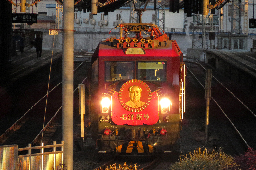- cross-posted to:
- [email protected]
- [email protected]
- cross-posted to:
- [email protected]
- [email protected]
cross-posted from: https://lemm.ee/post/6168675
RRFBs. HAWK signals. Do any of these devices actually do what they’re supposed to do, and how do traffic engineers decide when and where to install them?
As a European, much of this was mind-boggling to me. While I believe all of this is real, I still found myself wondering throughout the video: Is this actually the norm in the US, or are these some cherry-picked bad examples? It felt for me like a whole other level of systemic hostility.
Oh, it’s normal alright. It’s not like every street is like that, but every city has streets like that, some cities have a ton and some have less. My city is considered pretty decent for walking/biking/transit, though not amazing, and even here, in the city proper, not even out in the suburbs, there’s a lot of 4 lane stroads that are impossible to cross, and even streets that should be pretty quiet can be dangerous when they refuse to even paint on a sidewalk on (the “liability avoidance” thing this vid mentions seems to be the reason/excuse, along with the “well nobody crosses at this incredibly dangerous unmarked crosswalk therefore there is no demand and we don’t need to make it safer” BS)
I bet a dozen drivers max in the whole state know they have to stop for pedestrians even if the paint isn’t there. if you start to step out into the road and glare intently you can get people to stop if they’re paying attention, but you’re more likely to get honked at than other traffic actually stopping. with these types of roads it’s really a “take your life in your own hands getting their attention and still piss off a few drivers” thing, or walk to the nearest signalized intersection.
Even marked crosswalks are very hit and miss if people will stop, but once you’re out in it they usually will if they are paying attention. There are a number of bike/ped crossings with HAWK or similar flashing light systems, and honestly the adherence rate on those after at least a few years of them being installed is much better than a paint-only treatment, I usually don’t have to wait long after hitting the button, but it’s still far from good (I’d consider it good if I could press the button and step out into the street with confidence within a short period, like 5 seconds, now its longer, and I have to look pretty carefully at incoming traffic to guess if they’re actually stopping). And some people try to run past it before you get out into the road, so if you wait for traffic to actually stop before entering the road then you’re just encouraging far-side traffic to keep running through the light before you get to them.
Yeah, this fairly normal. It’s not like it’s every street. These are boulevards, like arteries through a city. The traffic isn’t high enough for a highway but too much for single lanes. Usually lined with businesses and stuff like that.
I’ve been a walker for most of my life. It’s really not a big deal. You cross when you can. Stopping in the median/island is normal. Most of the time you just cross at a corner that has traffic lights though.
The whole vehicles must stop for pedestrians thing gets really overblown. I never want cars to stop for me. They’re 2+ ton metal objects moving faster than I can move, I want them to go past and be away from me. The only time I’ve ever been hit by a car was when one stopped for me, the driver stopped paying attention, and suddenly hit the gas when I was directly in front of them.
I wave them to pass me. It’s just easier.
These “boulevards” are properly called stroads and need to all be demolished.
I thought that’s what the guy in the video said but I chalked it up me not hearing him right lol.
Never heard of stroads before. ThanksStroads are the abomination that happens when traffic engineers try to build a street and a road at the same time and end up with the drawbacks of both and the advantages of neither. Would you like to know more?



